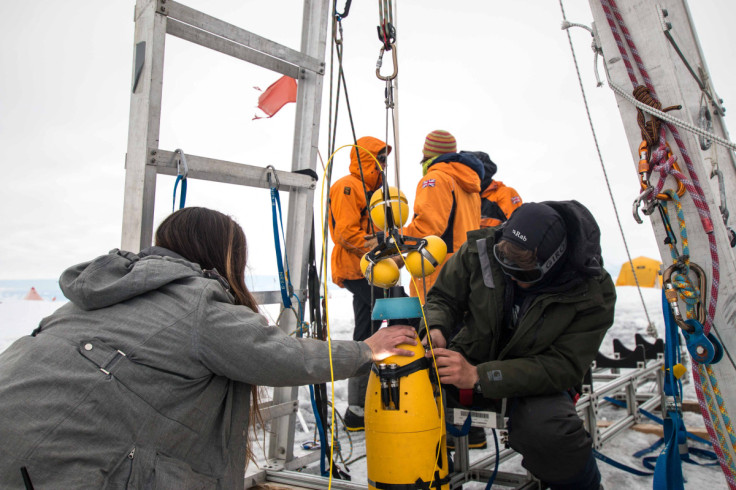Uncovering the mystery behind Antarctica's 'Doomsday Glacier' melting faster than expected

KEY POINTS
- Thwaites Glacier is the largest glacier in West Antarctica
- The glacier is melting rapidly due to rise in temperatures
- The collapse of the glacier could raise global sea level by up to two feet
Thwaites Glacier, which is the largest glacier in West Antarctica, is melting in unexpected ways due to rising temperatures.
Thwaites is nicknamed as the "Doomsday Glacier" because its collapse could lead to a catastrophic rise in sea levels.
As part of the International Thwaites Glacier collaboration which is the biggest field campaign ever attempted in Antarctica, a team of 13 scientists from the U.S. and U.K. spent about six weeks researching the glacier in late 2019 and early 2020.
Here's what the researchers have found
Scientists say that the Thwaites Glacier is melting faster than it appears as warm water is seeping into its weak spots. They revealed detailed information on the factors influencing Thwaites' future in two studies that were published in the journal Nature.
Thwaites Glacier is partly held back in place by an ice shelf that juts out onto the surface of the ocean. The shelf acts like a cork, holding the glacier back on the land and providing an important defence against the rise of sea levels. However, this ice shelf is at risk as ocean temperatures continue to rise.
The glacier continues to change rapidly as climate change accelerates, contributing about 4% of the annual sea level rise.
Scientists were specifically interested in investigating the glacier's grounding zone, which is where the ice meets the sea and becomes a floating ice shelf. They inserted remotely operated submersibles and other equipment into a 2,000-foot hole drilled into the ice to obtain data on the water coming into contact with Thwaites' grounding line and floating ice shelf.
An underwater robot vehicle known as Icefin allowed them access to areas that were previously impossible to survey. The robot recorded data on the salinity and temperature of the water and ocean currents. The scientists were also able to gather new information about the topography of the bedrock underlying the glacier, including at the grounding line.
According to the studies, the pace of ice shelf melting underneath is slower than previously expected. The melting rate averaged at 2 to 5.4 meters a year, according to the study, less than previous models had projected. However, there are deep cracks and staircase-like formations of terraces and crevasses in the ice, causing it to melt much faster, making it susceptible to rapid and irreversible ice loss that could raise the global sea level.
It was found that melting was rapid in these specific areas where warm, salty water was able to funnel through and widen cracks and crevasses, contributing to instabilities in the glacier.
"The glacier is still in trouble. What we have found is that despite small amounts of melting there is still rapid glacier retreat, so it seems that it doesn't take a lot to push the glacier out of balance," said Peter Davis, an oceanographer at the British Antarctic Survey and a lead author of the other paper, as reported by CNN.
According to researchers, the collapse of this gigantic glacier may have already begun a rapid and irreversible ice loss that could raise global sea level by up to two feet (70 centimeters) this century.
This would be enough to devastate coastal regions and communities around the globe. However, Thwaites Glacier also acts as a natural dam to the surrounding ice in West Antarctica. Due to this, scientists have estimated that the global sea level could ultimately rise around 10 feet if it collapses.
"These types of observations are incredibly difficult to make, but they are so important to informing the modelling community about how indeed the vulnerable parts of the ice sheets are melting," said Peter Washam of Cornell University who co-authored one of the papers, as reported by Axios.
The effects of climate change and global warming continue to threaten the planet's well-being and the rapid changes to the Thwaites Glacier is an example of the destructive changes caused by the raising temperatures across the world.
© Copyright IBTimes 2025. All rights reserved.





















